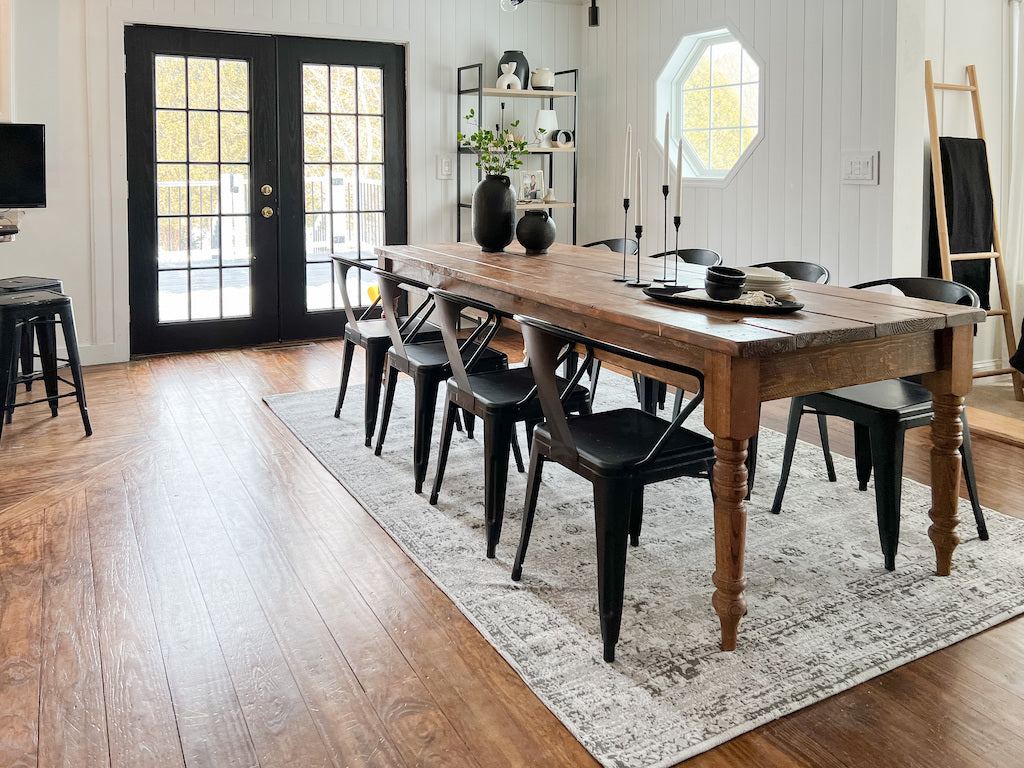
How To Elevate Your Home With The Spanish Colonial Design Style
Indulge in the warmth and vibrancy of Spanish Colonial design by incorporating earth tones, rustic elements, and vivid pops of colour. This style emphasises simplicity, symmetry, natural materials, and traditional features such as archways and courtyards. Achieve a cohesive Spanish Colonial look by layering textiles, infusing bursts of colour, and mixing patterns.
Add character and charm to your home with handcrafted furniture, wrought iron lighting, and artfully hung decorative items. Lastly, don’t forget to create an open-air living space and enhance your indoor air quality by incorporating plants and greenery.
Spanish Colonial Design: History, Features, and Comparisons
Brief History of Spanish Colonial Design
You cannot discuss the history of Spanish colonial design without mentioning its origins. The roots of this style can be traced back to 16th-century Spain, where a movement towards a more unified and functional design aesthetic was taking place.
Spanish colonialism played an essential role in promoting the spread of this style, as it was exported to the Americas, the Philippines, and parts of Africa and Asia during the Spanish colonisation of these regions.
As the Spanish Empire expanded, so did their design influence. Spanish Colonial Design flourished in regions such as Mexico, Central America, and the Caribbean in the 17th and 18th centuries, where blending European and indigenous themes was commonplace. The style is known for its use of natural materials such as adobe, stone, and wood, and distinctive traits such as archways, terraces, and inner courtyards, reflecting its placement in tropical environments.
Key Features of Spanish Colonial Design
What distinguishes Spanish colonial design from other styles is its ability to combine cultures and diversity in its features. Spanish colonial design is characterised by its simplicity, symmetry, and functionality, emphasising rough-hewn textures, earthen colours, and decorative elements that speak to the culture’s heritage and history.
Spanish Colonial homes are often identified by touches such as low-pitched roof lines, thick walls with few windows, and asymmetrical facades. Often, the corners are rounded, and the rooflines reflect the dominant historical influences in the region – in some areas, they are flat, and in others, they are sloping and tiled. Decorative iron grilles, wooden portals, and vividly coloured patterned tiles are other common features.
Contrasting Spanish Colonial with Other Styles
Spanish Colonial design is unique in that it has experienced cultural diffusion and influences from different regions, making it distinct from various styles. For instance, it distinguishes itself from Tuscan architecture through the use of colourful tile work and its asymmetrical design.
In contrast to French Colonial architecture, which found inspiration from French classical architecture, Spanish Colonial design mixes natural materials with rustic elements, such as adobe brick and hand-carved beams, to create a livable, organic warmth suited for tropical environments.
💡KEY TAKEAWAY: The art and architecture of different cultures offer a unique perspective on how they live their lives and function as a society. It blends European and indigenous themes and emphasises natural materials, simplicity, symmetry, and functionality. Its distinctive features include archways, inner courtyards, and rough-hewn textures. It differs from other styles like Tuscan and French Colonial architecture.
Textures and Colours of Spanish Colonial Design
The Role of Earth Tones and Vibrant Colours
Earthy hues like beige, terracotta, ochre, and burnt sienna are commonly used in Spanish Colonial design. These colours evoke the warmth of the sun-bleached Spanish countryside. In contrast, vivid hues such as turquoise, emerald green, and deep red are used to add bold pops of colour. The vibrant colours reflect the lively spirit and cultural vibrancy of the Spanish colonies.
Use of Tiles, Terracotta, and Brick
Tiles, terracotta, and brick are commonly used elements in Spanish Colonial design. Ceramic tiles, in particular, are widely used in foyers, kitchens, and bathrooms to add a touch of grandeur and sophistication. Terracotta and brick are used both inside and outside the home to create a warm, rustic aesthetic that reflects the Spanish countryside.
These materials are often used in flooring, walls, and even in the construction of outdoor living spaces.
Creating Harmony with Wood, Wrought Iron, and Textiles
Natural wood is an essential element in Spanish Colonial design. The use of dark, rustic woods like walnut and mahogany for furniture and decor creates an ambience of elegance and refinement. Wrought iron is also used extensively in the style, serving as a decorative element in gates, railings, and light fixtures.
Fabrics like wool, silk, and cotton are often used in textiles like curtains, blankets, and rugs. These materials create a cosy and inviting environment that complements the natural warmth of Spanish Colonial design.
💡KEY TAKEAWAY: The textures and colours of Spanish Colonial design reflect the warmth and vibrancy of the Spanish culture. The use of elements like earth tones, vibrant colours, tiles, terracotta, brick, wood, wrought iron, and textiles create a warm and inviting ambience that is both elegant and rustic.
Spanish Colonial Furniture and Accents
Furniture with an Old-World Charm
Spanish Colonial furniture is known for its handcrafted quality and intricate details. Pieces often feature carved motifs and painted designs that add character to any room. Consider adding a Spanish Colonial-style dining table or intricate wooden bed frame to achieve this look.
Incorporating Wooden and Leather Pieces
Wood and leather are two materials commonly used in Spanish Colonial furniture. Incorporating wooden accent pieces like a rustic side table or leather pieces like a leather ottoman can help your space feel cohesive and put together.
Use of Rustic Textiles and Artisanal Pottery
Textiles and pottery are essential elements in Spanish Colonial decor. Handwoven wool blankets or pillows, and artisanal pottery pieces add warmth and texture to a room. Consider using a Southwestern-style rug or a Talavera vase to complete the look.
💡KEY TAKEAWAY: Spanish Colonial furniture and accents add character and warmth to any space with their handcrafted quality, intricate details, and use of wooden, leather, and rustic textiles. Incorporating these elements can help transform a room into an inviting and charming space.
Spanish Colonial Lighting and Accessories
Attractive and Decorative Wrought Iron Lighting
Add an elegant touch to your Spanish colonial-style home with wrought iron lighting. This type of lighting is both attractive and functional and has been used for centuries in Spanish colonial homes and buildings. Wrought iron light fixtures are available in a wide range of styles, from simple and traditional to more intricate and ornate designs.
Whether you’re looking to add a touch of rustic charm to your living room or you want to create a dramatic entryway, wrought iron lighting is a great way to achieve the look you want.
Hanging Mirrors, Paintings, and Tapestries
Hanging decorative items such as mirrors, paintings, and tapestries can instantly add character and style to your Spanish colonial home. These types of accessories are not only practical but can also serve as beautiful focal points in your space. Mirrors can reflect the natural light and make a room appear larger and brighter, while paintings and tapestries can add a pop of colour and texture to your walls.
Look for pieces with rich, earthy tones and intricate designs to complement your Spanish colonial decor.
Using Plants and Greenery to Improve Indoor Air Quality
Plants and greenery can do wonders for improving indoor air quality in your Spanish colonial home. Not only do they help purify the air by removing pollutants, but they also add a touch of natural beauty to your space. Choose plants such as snake plants, peace lilies, and spider plants, which are known for their air-purifying properties.
You can also use herbs such as lavender and basil to add fragrance and freshen up your home. Don’t be afraid to get creative and use plants as decor throughout your home, from the kitchen to the living room.
💡KEY TAKEAWAY: Add a touch of Spanish colonial style to your home with wrought iron lighting, hanging decorative items, and incorporating plants and greenery to improve indoor air quality.
Design Tips for a Spanish Colonial Home
Mixing Patterns with Symmetry for a Cohesive Look
Mixing patterns can be tricky, but with the right balance, you can create a cohesive look that exudes sophistication. Spanish Colonial style relies on symmetry, so choose patterns that complement each other in a balanced, harmonious way. Stick to warm earthy tones such as terracotta, ochre, and burnt sienna to tie the look together.
Creating an Inviting Open-Air Living Space
One of the greatest joys of living in a Spanish Colonial home is the opportunity to enjoy the great outdoors. To create an open-air living space, consider adding an outdoor kitchen, a fire pit or a cosy seating area that allows you to enjoy the beautiful weather all year round. Use natural materials such as wood and stone to create a seamless transition between the indoors and outdoors.
Layering Textiles and Infusing Burst of Colours to Enhance Any Room
Spanish Colonial decor is all about comfort and luxury. Layering textiles and adding bursts of colour can enhance any room in your home. Consider adding richly textured throws and blankets to your furniture, or investing in a luxurious wool rug to elevate the look of your living room. Don’t be afraid to add pops of colour through throw pillows and decorative accessories to create a vibrant, inviting space.
💡KEY TAKEAWAY: Achieving the Spanish Colonial look for your home is all about balance, symmetry, and luxury. Follow these tips to create a cohesive, stylish space that showcases the beauty of this timeless design style.
At Miss Amara, you’ll discover a wide range of high-quality rugs that can add texture, warmth, and character to your home. We’re passionate about providing a seamless, enjoyable shopping experience that can help you find the perfect rug to match your unique taste and home decor.


















